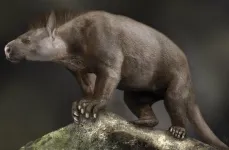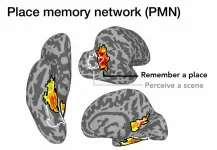Can fisheries benefit from biodiversity and conserve it too?
Biodiversity seems, naturally, like a good thing but when it comes to fisheries management, it can involve competing trade-offs.
2021-05-13
(Press-News.org) A new study, by researchers from Simon Fraser University and the Department of Fisheries and Oceans, reveals the trade-offs of fish biodiversity--its costs and benefits to mixed-stock fisheries--and points to a potential way to harness the benefits while avoiding costs to fishery performance.
Many Pacific salmon fisheries catch fish that come from multiple stocks (management units), often representing locally-adapted populations, in so-called mixed-stock fisheries. Fish are intercepted in the ocean as they migrate along the coast, returning to different rivers to spawn.
The study used computer models of hypothetical fisheries and case studies of three actual sockeye salmon fisheries, including BC's Fraser River fishery, to explore how fish biodiversity within mixed-stock fisheries influences both fishery performance and conservation risks.
"Our paper highlights that biodiversity in fisheries can provide benefits by stabilizing catches from year to year, much like a diverse stock portfolio provides more stable returns to the investor," says lead researcher on the paper, SFU biological sciences professor Jonathan Moore. "But this comes at the cost of increases in the risk of extinction to individual populations and decreases in the amount that fisheries can harvest without risking long-term sustainability."
This is because the mixed-stock fisheries are harvesting populations that can have different levels of productivity; some are considered 'strong,' with high adult spawner returns and high population growth rates, while others are 'weak' and more at risk of being fished to low levels or extinction.
Moore says, "In any given major salmon watershed, like the Fraser, there may be more than a dozen different populations that have different productivities and whose returns vary asynchronous from year to year. This remarkable salmon diversity is challenging for sustainable fisheries management."
A way forward for mixed-stock fisheries
How then can fisheries be sustainable, in places like the Fraser River, conserving or rebuilding stock diversity while also benefiting from it?
When fisheries can target fish from individual productive stocks while avoiding catching unproductive, weak ones, they can avoid many of the pitfalls of mixed-stock fisheries. This high degree of management control can allow fisheries to maintain high harvest rates while reducing the conservation risks.
"Whether it is the use of genetic stock identification to inform in-season fishery management, or the resurgence of terminal salmon fisheries by First Nations, there are many ways that salmon fisheries could increase their ability to target specific stocks," says Moore.
When opportunities for increased management control are not available, fishery managers have the difficult task of balancing the need for harvests that support fishers with risks of overfishing weak stocks. Often fishing rates are lowered to reduce conservation risks but this comes with the trade-off of potential missed opportunities for high catches of fish from thriving stocks.
"In situations when there isn't opportunity for increased management control, there is no single right answer and so it is critical that the nature of the trade-off between mixed-stock harvest and conservation risks be understood, so that decision making is as informed and transparent as possible" says Brendan Connors, Research Scientist at DFO and co-author on the paper.
While the paper focused on highly diverse Pacific salmon fisheries, it has broad implications for mixed-stock fisheries in general, ranging from coastal salmon to open-ocean longlines to bottom-trawl fisheries.
INFORMATION:
[Attachments] See images for this press release:

ELSE PRESS RELEASES FROM THIS DATE:
2021-05-13
PASADENA, Calif. -- Among cancer patients with health coverage in Southern California, those who were diagnosed and treated at Kaiser Permanente, an integrated health care organization, had better survival rates, especially Black and Latino patients, according to Kaiser Permanente research published in The American Journal of Managed Care.
"Kaiser Permanente is committed to finding and addressing health care inequities," said the study's senior author, Reina Haque, PhD, a cancer epidemiologist in the Kaiser Permanente Southern California Department of Research & Evaluation. "We investigated survival among insured patients with cancer ...
2021-05-13
SAN FRANCISCO, CA--May 12, 2021--Following the minuscule movements of every cell in a petri dish would be a painstaking task for any human. But teach a set of computer programs to do the job, and they can complete it quickly and even observe things that the human eye would miss.
Scientists at Gladstone Institutes have developed such an approach, which uses "neural nets"--artificial intelligence programs that can detect patterns--to analyze the locations of hundreds of cells growing together in a colony. When they applied the technique to a group of stem cells, the program revealed that a small number of cells act as "leaders," able to direct the movements of their neighbors.
"This technique gives us a much more comprehensive view of how cells behave, how they work cooperatively, and how ...
2021-05-13
White evangelicals are best persuaded to mask up through messages that stress the Christian doctrine of "love thy neighbor," according to a UCR-authored study published Tuesday.
The study yielded a second effective way to persuade white evangelicals - but only if they are Republican. That is, messaging from former President Donald Trump that aligns mask-wearing with patriotism.
The lessons learned from the study can be borrowed for pro-vaccine messaging, said study author Jennifer Merolla, a UCR professor of political science.
About 45% of white evangelicals do not plan on getting vaccinated against COVID-19, according to a Pew Research Center poll. Health officials have said persuading the 41 million white evangelical ...
2021-05-13
A person's stance on abortion is linked to their, often inaccurate, belief about when a fetus can feel pain, a University of Otago study has found.
Lead author Emma Harcourt, PhD candidate in Otago's Centre for Science Communication, says misinformation about abortion and pregnancy is common and potentially harmful.
"The current medical consensus is that it is unlikely that fetal pain perception is possible before the 29th or 30th weeks of pregnancy. However, we found that most people believe that the capacity to feel pain develops much earlier and that this was particularly evident in participants with anti-abortion views," she says.
The study, published in The Australian and New Zealand Journal of Obstetrics and Gynaecology, recruited 374 ...
2021-05-13
Numerous compelling evidences from astroparticle physics and cosmology indicate that the major matter component in the Universe is dark matter, accounting for about 85% with the remaining 15% is the ordinary matter. Nevertheless, people still know little about the dark matter, including its mass and other properties. Many models predict dark matter particles could couple to ordinary particle at weak interaction level, so it is possible to capture the signal of dark matter particle in the direct detection experiment. The scientific goals of the China ...
2021-05-13
The evolution of ankle and foot bones into different shapes and sizes helped mammals adapt and thrive after the extinction of the dinosaurs, a study suggests.
A surge of evolution following the mass extinction 66 million years ago enabled mammals to diversify and prosper during a period of major global change, researchers say.
Analysis of bones that form part of the ankle and the heel of the foot reveal that mammals during this time - the Paleocene Period - were less primitive than previously thought.
Palaeontologists from the University of Edinburgh made the discovery by comparing the anatomy of Paleocene mammals with species from the earlier Cretaceous ...
2021-05-13
As we move through the world, what we see is seamlessly integrated with our memory of the broader spatial environment. How does the brain accomplish this feat? A new study from Dartmouth College reveals that three regions of the brain in the posterior cerebral cortex, which the researchers call "place-memory areas," form a link between the brain's perceptual and memory systems. The findings are published in Nature Communications.
"As we navigate our surroundings, information enters the visual cortex and somehow ends up as knowledge of where we are - the question is where this transformation into spatial ...
2021-05-13
A research group has developed an ion-selective smart porous membrane that can respond to outer stimuli, potentially paving the way for new applications in molecular separation and sensing applications.
Porous thin films have attracted the attention of scientists because of their potential use in sensors, energy harvesting, and ion/molecular separation.
Nanostructure properties, such as pore size, thickness, and film density, affect molecular selectivity and molecular permeability. Surface properties also have a significant impact on molecular selectivity.
Thus it is important to be able to control both the 3D nanostructures and surface properties of ultrathin porous films.
Previous research shed light on smart porous membranes, which are covered with molecules that can respond ...
2021-05-13
Eating a diet rich in fruit and vegetables is associated with less stress, according to new research from Edith Cowan University (ECU).
The study examined the link between fruit and vegetable intake and stress levels of more than 8,600 Australians aged between 25 and 91 participating in the Australian Diabetes, Obesity and Lifestyle (AusDiab) Study from Baker Heart and Diabetes Institute.
The findings revealed people who ate at least 470 grams of fruit and vegetables daily had 10 per cent lower stress levels than those who consumed less than 230 grams. The World Health Organization (WHO) recommends ...
2021-05-13
Arizona! The sunsets. The saguaros. The snakes.
All of them are part of life in the sunny Southwest, but keeping cool when the latter is holed up in a golf bag, air compressor or swimming pool pump house is a big ask for a lot of people.
Not as big as you'd think, however.
The first study to analyze snake removals in a social-ecological context was recently published by an Arizona State University conservation biologist working with a local rattlesnake removal company.
"I think one of the surprises was that people don't hate snakes," said researcher Heather Bateman of the College of Integrative Sciences and Arts. "A lot of them responded that the snakes are important to the desert ecosystem and the snake belongs ...
LAST 30 PRESS RELEASES:
[Press-News.org] Can fisheries benefit from biodiversity and conserve it too?
Biodiversity seems, naturally, like a good thing but when it comes to fisheries management, it can involve competing trade-offs.





